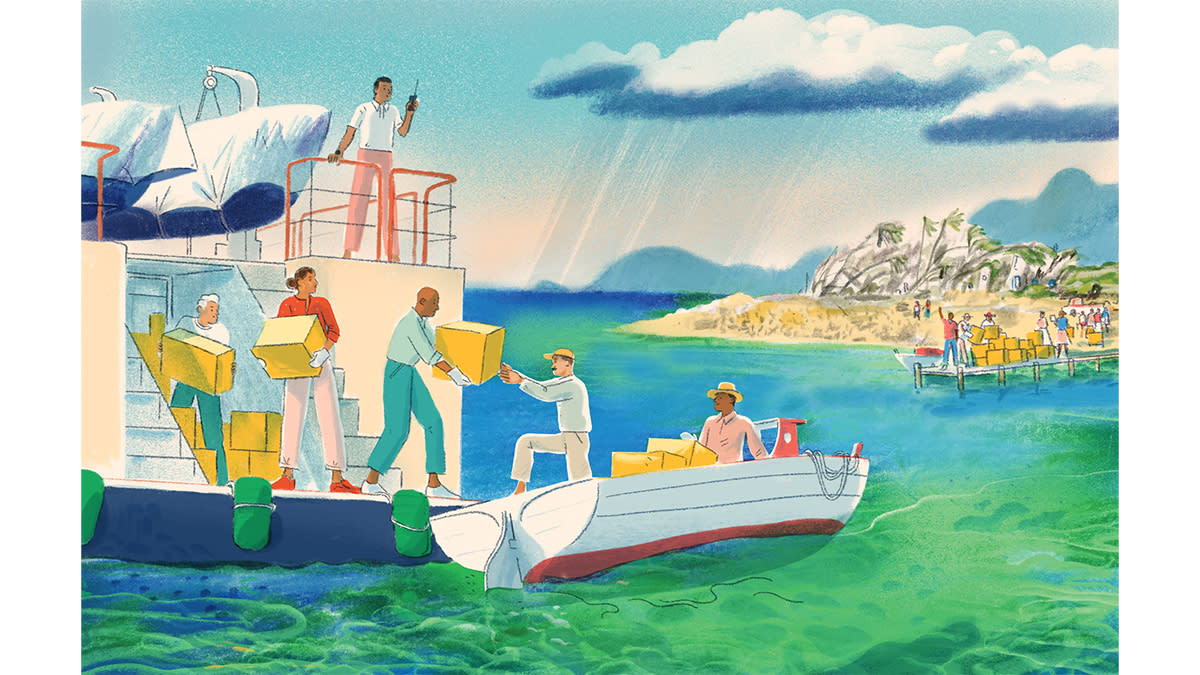How Yacht Owners Are Using Their Explorer Vessels for Humanitarian Efforts

Yachting has long been synonymous with escape, but owners today are increasingly opting to engage instead, by employing their explorer vessels for humanitarian missions. Consider Texas billionaire Toby Neugebauer, chairman of Crestmoor Advisors, who’s preparing his 180-foot Purpose for a five-year global journey next month. Having recently undergone an extensive refit, Purpose will be used for both charter and charity, allowing guests the option to get involved with philanthropic aid, from relief efforts to educational fieldwork.
“The aim is to leave each destination better than we found it,” says Neugebauer, who plans to join the expedition for eight weeks. “I can’t imagine us doing a trip where we’re not doing something constructive.”
More from Robb Report
These 3 Miniature Explorer Yachts Are Ready to Take You Off-Grid
Pershing's New 80-Foot Yacht Is Like a Sports Car for the High Seas
How CES Became the Launchpad for Boating's Newest Innovations
Other causes close to Neugebauer’s heart include disaster recovery, female empowerment in developing nations, and strengthening families—all of which are existing areas of expertise for YachtAid Global (YAG). Since 2006, the California nonprofit has worked with hundreds of yacht owners to orchestrate relief missions for hurricane-ravaged islands as well as more long-term aid projects for areas such as Mexico’s Baja peninsula.
The organization counts some of the world’s largest philanthropists and philanthropic entities, including Sir Richard Branson, as benefactors. “Many high-profile owners donate large sums of money and sometimes the use of their yachts and crew,” says YAG’s director, Zoran Selakovic, who also sits on the board. “Most choose to stay anonymous to keep the focus on their work, rather than on themselves.”
Projects have included seed banks in the Caribbean and build-back initiatives in Fiji, Mexico, and Vanuatu. Case in point: YAG built a solar-energy plant for a children’s home in La Paz, Mexico, to give it independence from the grid. “Even when storms knock out electricity in the area, the lights stay on,” Selakovic says.
The firm doesn’t want to just throw money at a problem. For example, yacht owners who want to see the great white sharks of Isla Guadalupe, off the coast of Baja, use local dive boats “run by captains who grew up in these orphanages,” according to Selakovic. “This work goes full circle, and we’ve found that as yacht owners hear about successful projects from other owners, they get involved.”
In 2019, when Hurricane Dorian, with its record 185 mph winds and storm surge, tore through the Abacos, Carl Allen turned his three-yacht fleet into a floating humanitarian convoy. “We went into immediate relief mode, and the vessels became cargo ships,” says Allen, who owns the treasure-hunting operation Allen Exploration and grew up boating in the Bahamian out islands.
Allen’s 164-foot Westport Gigi, the 183-foot expedition support vessel Axis, and the 68-foot Viking sportfisher Frigate shuttled over 50 tons of water, food, diapers, and construction supplies to islands that, for weeks, no government vessel could access. “One of our first missions was to deliver a bank of Tesla batteries to get the hospital back up and running,” Allen says, noting that his fleet made 11 trips over three months due to the level of devastation. Aboard for about half of those sorties, Allen and his wife, Gigi, were assisted by volunteers who likewise had strong boating connections to the Abacos.
Post-Dorian endeavors include the Bahamas Plastic Movement and the Bahamian Youth Foundation, which provides tablets to schools across the Bahamas. “We’ve donated more than 1,700 to date, and the government has now agreed to match our efforts,” says Allen, who describes the initial assistance as turning into “a machine that kept cranking.” When it comes to exploration yachting, it seems the winds of change are taking some in an important new direction.
Best of Robb Report
Sign up for Robb Report's Newsletter. For the latest news, follow us on Facebook, Twitter, and Instagram.

